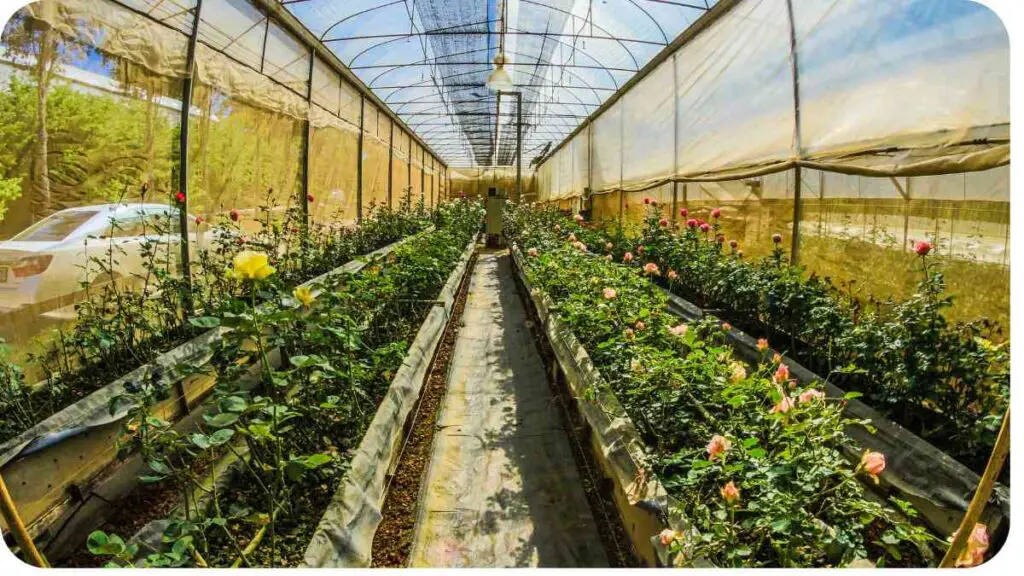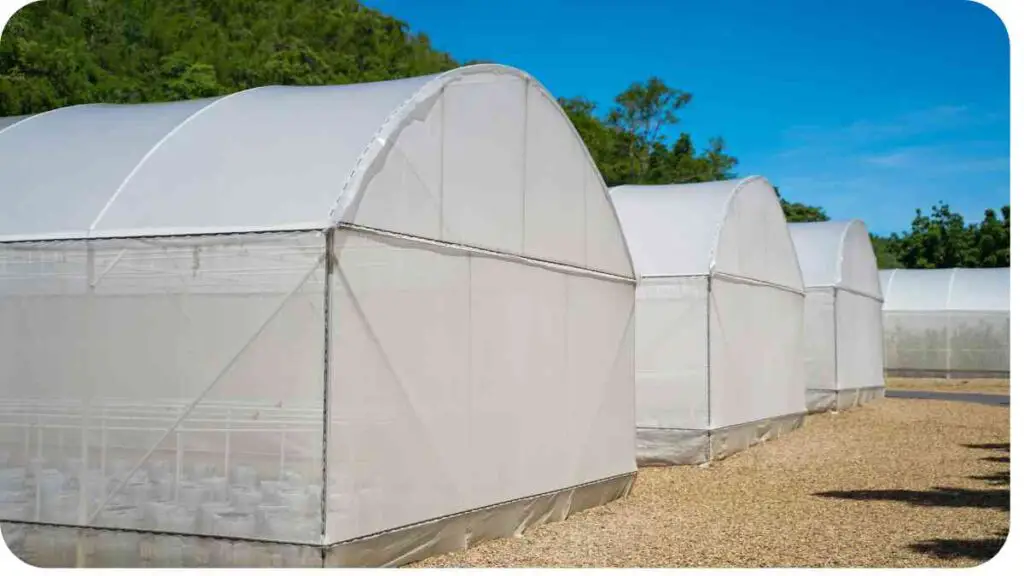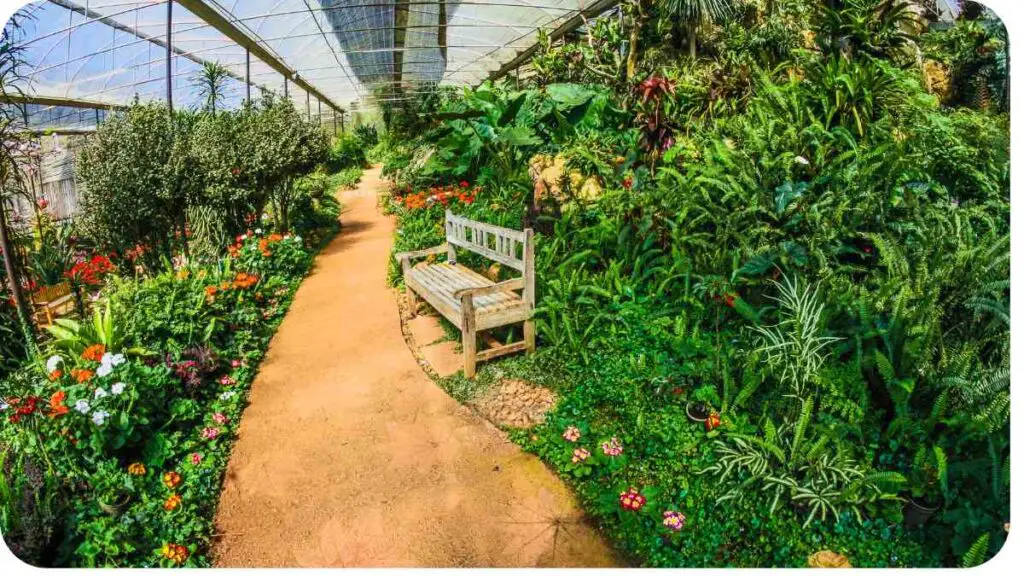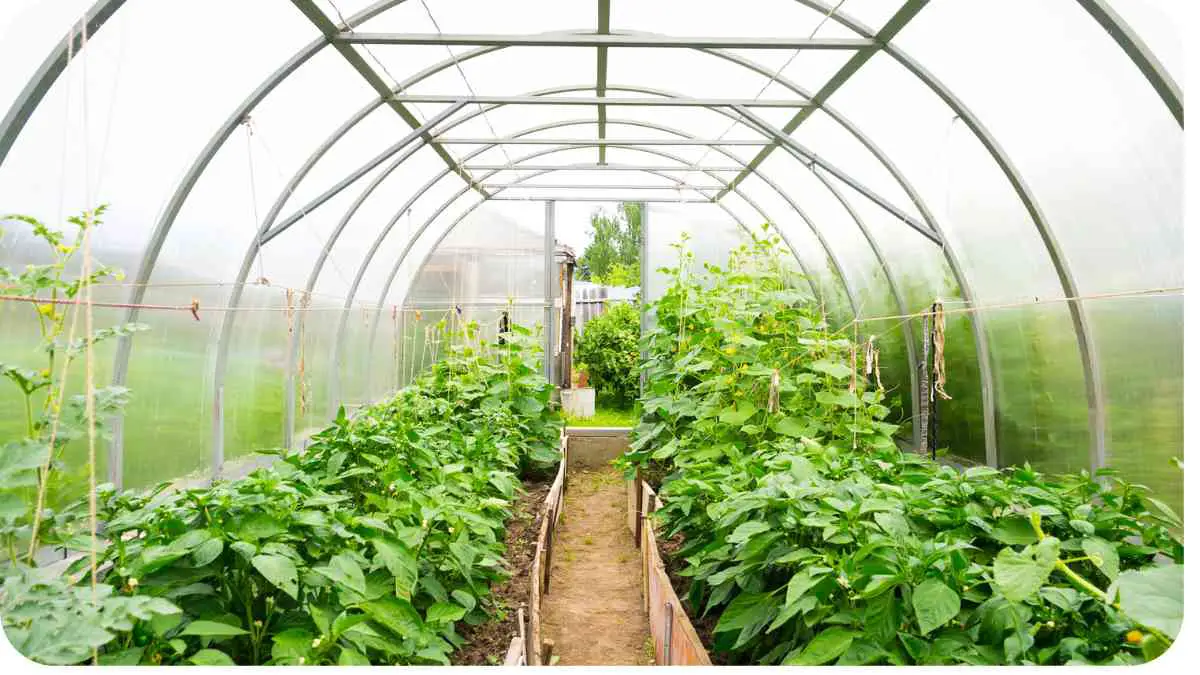Are you ready to take your indoor gardening to the next level? One essential investment for any indoor gardener is a high-quality grow tent. Whether you’re a beginner or a seasoned grower, choosing the right grow tent can significantly impact the success of your indoor garden. In this comprehensive guide, we’ll explore everything you need to know to find the best grow tent for your needs.
| Takeaways |
|---|
| 1. Choose the right size tent for your indoor garden needs. |
| 2. Prioritize durability and quality materials for long-term use. |
| 3. Ensure proper ventilation and airflow for healthy plant growth. |
| 4. Opt for tents with reflective interiors to maximize light distribution. |
| 5. Regular maintenance is essential for maintaining a successful indoor garden. |
2. Understanding Grow Tents

What is a Grow Tent?
A grow tent is a self-contained, indoor growing space designed to provide optimal conditions for plants to thrive. It typically consists of a sturdy frame covered in light-reflective material, such as Mylar, and features openings for ventilation, electrical cords, and other accessories.
Constructing a grow tent demands precision and planning. From frame assembly to light fixture installation, every step influences your plants’ growth. Ensure a sturdy structure and proper insulation for optimal results.” – How to Build a Grow Tent
Benefits of Using Grow Tents
| Benefits | Description |
|---|---|
| Controlled Environment | Grow tents allow you to control key environmental factors such as temperature, humidity, and light levels. |
| Light Management | The reflective interior of grow tents maximizes the effectiveness of grow lights, promoting uniform growth. |
| Odor Control | Grow tents help contain odors, making them ideal for discreet indoor gardening. |
| Pest and Disease Prevention | By creating a barrier between your plants and the outside environment, grow tents can help prevent pest infestations and disease outbreaks. |
3. Factors to Consider When Choosing a Grow Tent
Size and Space Requirements
When selecting a grow tent, consider the available space in your home or grow room. Measure the area where you plan to set up the tent to ensure it fits comfortably. Additionally, think about the number of plants you intend to grow and their mature size to determine the appropriate tent size.
Material and Durability
The quality of the materials used in a grow tent can greatly impact its durability and performance. Look for tents made from sturdy, tear-resistant fabric with reinforced stitching. A durable tent will withstand the rigors of regular use and provide a stable growing environment for your plants.
Ventilation and Airflow
Proper ventilation is crucial for maintaining healthy plant growth and preventing issues like mold and mildew. Choose a grow tent with multiple ventilation ports and adjustable vents to regulate airflow. Additionally, consider the compatibility of the tent with exhaust fans, carbon filters, and other ventilation equipment.
Lightproofing and Reflectivity
Lightproofing is essential for controlling the light cycle during the flowering stage of plant growth. Ensure the grow tent you choose features heavy-duty zippers and lightproof seals to prevent light leaks. Look for tents with highly reflective interiors, such as those lined with Mylar, to maximize light distribution and promote even growth.
Setup and Portability
Ease of setup and portability are important factors to consider, especially if you plan to move or reconfigure your indoor garden frequently. Choose a grow tent with a simple assembly process and sturdy frame design. Look for features like tool-free installation and carrying bags for convenient transport.
Ventilation plays a pivotal role in maintaining an ideal environment within your grow tent. Learn how to fine-tune your ventilation system to promote air circulation and regulate temperature and humidity levels effectively.” – The Importance of Proper Ventilation in Grow Tents
4. Types of Grow Tents

Standard Grow Tents
Standard grow tents are the most common type and come in a variety of sizes to accommodate different growing needs. They typically feature a rectangular shape with multiple access points and ventilation options.
Closet Grow Tents
Closet grow tents are designed to fit into tight spaces, making them ideal for small apartments or closets. They often feature a taller, narrower design to maximize vertical growing space.
Stealth Grow Tents
Stealth grow tents are specifically engineered to minimize odor and noise, making them ideal for discreet indoor gardening. They often feature extra-thick fabric and advanced filtration systems to keep your garden hidden from prying eyes.
Commercial Grow Tents
Commercial grow tents are larger in size and designed for professional growers or large-scale operations. They offer ample space for multiple plants and advanced features for precise environmental control.
5. Top Features to Look for in a Grow Tent
Quality Zippers and Seams
Invest in a grow tent with high-quality zippers and reinforced seams to ensure a tight seal and prevent light leaks. Cheap zippers and poorly stitched seams can lead to frustration and compromised plant health.
Lighting is a key determinant of plant growth in indoor environments. Discover the best practices for optimizing light conditions within your grow tent to maximize photosynthesis and promote healthy plant development.” – Optimizing Light Conditions in Your Grow Tent
Sturdy Frame and Construction
A sturdy frame is essential for supporting the weight of grow lights, fans, and other accessories. Look for tents with heavy-duty metal frames and sturdy connectors that can withstand the weight and stress of your equipment.
Removable Mylar Floor Tray
A removable Mylar floor tray makes cleaning and maintenance a breeze. It helps contain spills and runoff, protecting your floors and carpets from water damage and nutrient stains.
Multiple Ventilation Ports
Opt for a grow tent with multiple ventilation ports to accommodate your ventilation system and accessories. Adjustable vents allow you to fine-tune airflow and maintain optimal growing conditions for your plants.
6. Comparison of Popular Grow Tents
Mars Hydro Grow Tent
| Feature | Description |
|---|---|
| Size Options | Available in various sizes to suit different grow setups. |
| Reflective Interior | Features a highly reflective Mylar interior for maximum light distribution. |
| Easy Assembly | Simple to set up with sturdy metal frame and tool-free connectors. |
| Multiple Vents | Equipped with multiple ventilation ports and adjustable vents for airflow control. |
VIVOSUN Grow Tent
| Feature | Description |
|---|---|
| Durable Construction | Constructed with tear-resistant fabric and reinforced stitching for durability. |
| Observation Window | Includes a viewing window for easy monitoring of plant growth without disturbing the environment. |
| Dual-Layered Ventilation | Features double-layered ventilation socks for increased airflow and lightproofing. |
| Removable Floor Tray | Comes with a removable Mylar floor tray for easy cleaning and maintenance. |
Gorilla Grow Tent
| Feature | Description |
|---|---|
| Height-Adjustable Design | Features a height-adjustable frame to accommodate plants of varying heights. |
| Heavy-Duty Zippers | Equipped with strong, industrial-grade zippers and reinforced seams to prevent light leaks. |
| Diamond Reflective Interior | Utilizes diamond-patterned Mylar for superior light distribution and intensity. |
| Pest and Mold Resistance | Constructed with anti-microbial, tear-proof fabric to prevent pest infestations and mold growth. |
Apollo Horticulture Grow Tent
| Feature | Description |
|---|---|
| Steel Frame Construction | Built with a robust steel frame and durable connectors for stability and longevity. |
| Easy Access | Features large, zippered doors and observation windows for easy access and monitoring. |
| Reflective Mylar Interior | Boasts a highly reflective Mylar interior to maximize light efficiency and plant growth. |
| Tool-Free Assembly | Designed for quick and easy setup without the need for tools or complicated instructions. |
7. Setting Up Your Grow Tent

Choosing the Right Location
Selecting the optimal location for your grow tent is crucial for creating a successful indoor garden. Choose a space with access to electrical outlets and adequate ventilation. Avoid placing the tent near drafty windows or doors, as temperature fluctuations can affect plant growth. Additionally, consider factors like ambient light levels and proximity to other heat sources, such as radiators or heaters.
Maintaining the right humidity levels is crucial for the health and productivity of your plants in a grow tent. Explore effective techniques for controlling humidity and creating an environment conducive to plant growth.” – Controlling Humidity Levels in Grow Tents
Assembling the Frame
Before assembling your grow tent, carefully read the manufacturer’s instructions to ensure proper setup. Start by assembling the frame according to the provided guidelines, making sure all components are securely connected. Once the frame is in place, drape the tent fabric over it, ensuring a snug fit. Zip up the tent and adjust the frame as needed to achieve the desired height and stability.
Installing Grow Lights and Ventilation System
After assembling the tent, it’s time to install your grow lights and ventilation system. Hang your grow lights from the crossbars of the tent frame, making sure they are evenly spaced and positioned at the appropriate height above your plants. Next, connect your ventilation system, including exhaust fans, ducting, and carbon filters, to ensure proper airflow and odor control. Test the lights and ventilation system to ensure everything is functioning correctly before introducing your plants.
8. Maintenance Tips for Grow Tents
Cleaning and Sanitizing
Regular cleaning and sanitizing are essential for maintaining a healthy growing environment inside your tent. Remove any debris or plant matter from the tent floor and walls using a soft brush or cloth. Wipe down all surfaces with a mild disinfectant solution to eliminate any bacteria or pathogens that could harm your plants.
Checking for Light Leaks
Inspect your grow tent regularly for any signs of light leaks, especially along seams, zippers, and ventilation ports. Close the tent and turn off all lights to simulate nighttime conditions, then carefully examine the interior for any areas where light is seeping through. Use lightproof tape or patches to seal any leaks and prevent interference with your plants’ light cycle.
Monitoring Temperature and Humidity
Maintaining optimal temperature and humidity levels is crucial for promoting healthy plant growth and preventing issues like mold and mildew. Use a thermometer and hygrometer to monitor conditions inside your grow tent regularly. Adjust your ventilation system as needed to maintain stable temperature and humidity levels within the recommended range for your plants.
Inspecting for Pests and Diseases
Keep a close eye on your plants for any signs of pests or diseases, such as yellowing leaves, wilting, or unusual spots. Inspect both the plants and the interior of the tent regularly for any signs of infestation or infection. If you detect any issues, take prompt action to address them using organic pest control methods or appropriate fungicides.
Selecting the appropriate size of a grow tent is a critical decision that impacts the success of your indoor gardening endeavors. Understand the factors to consider when choosing the right size tent for your specific needs.” – Choosing the Right Size Grow Tent
9. Conclusion
Choosing the best grow tent for your indoor garden is a decision that can significantly impact the success of your plants. By considering factors such as size, material, ventilation, and portability, you can find a tent that meets your specific needs and provides an optimal growing environment.
Remember to research different brands and models, read reviews from other growers, and consider your budget before making a purchase. Once you’ve selected a grow tent, follow the manufacturer’s instructions for setup and maintenance to ensure long-lasting performance.
Further Reading
- Grow Dutch: Explore a wide range of grow tents and accessories to enhance your indoor gardening experience.
- Gorilla Grow Tent: Discover high-quality grow tents known for their durability, versatility, and innovative features.
- Hydrobuilder: Dive into a comprehensive guide to buying grow tents, featuring expert tips and recommendations.
FAQs
What size grow tent do I need?
The size of your grow tent depends on factors such as the number of plants you plan to grow and the available space in your home or grow room. Consider the mature size of your plants and allow ample room for them to thrive.
How do I set up a grow tent?
Setting up a grow tent involves assembling the frame, installing grow lights and ventilation, and ensuring proper environmental conditions. Follow the manufacturer’s instructions carefully and consider consulting online tutorials for step-by-step guidance.
What type of grow tent material is best?
Grow tents are typically made from either fabric or plastic. Fabric tents are durable, breathable, and provide better insulation, while plastic tents are lightweight and easy to clean. Choose a material that suits your specific needs and budget.
How do I maintain my grow tent?
Regular maintenance is key to ensuring the longevity and performance of your grow tent. Clean the interior regularly, check for light leaks, monitor temperature and humidity levels, and inspect for pests and diseases.
Can I customize my grow tent?
Yes, many grow tents offer features and accessories that allow for customization, such as adjustable height, additional ventilation ports, and hanging bars for grow lights and other equipment. Explore options for customization to tailor your grow tent to your specific growing needs.

I am Hellen James, a professional handywoman with expertise in improving home and garden spaces by using pergolas, gazebos, and tents.


